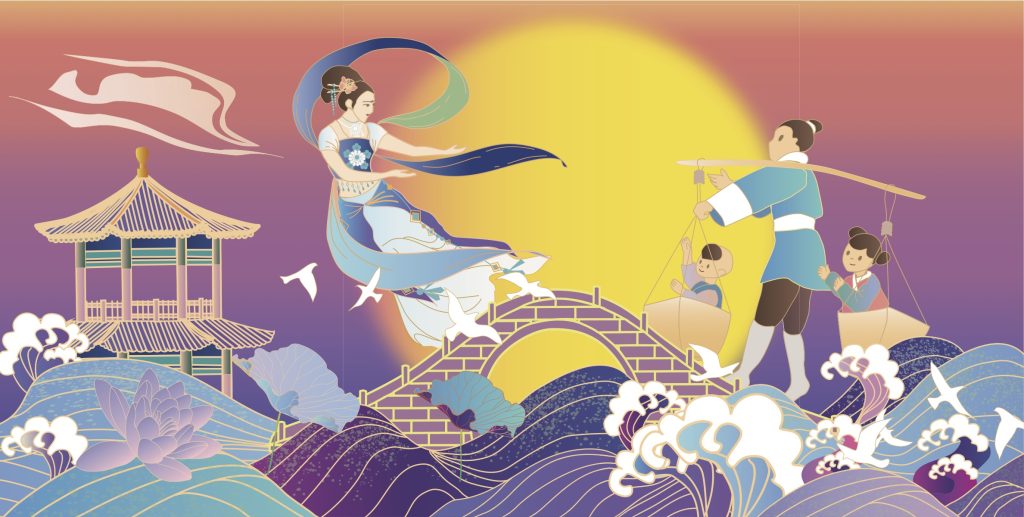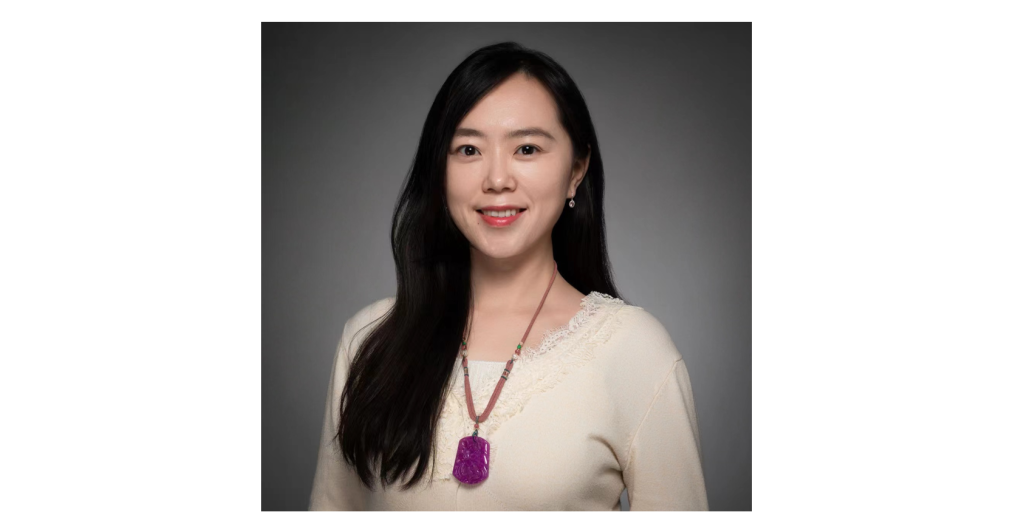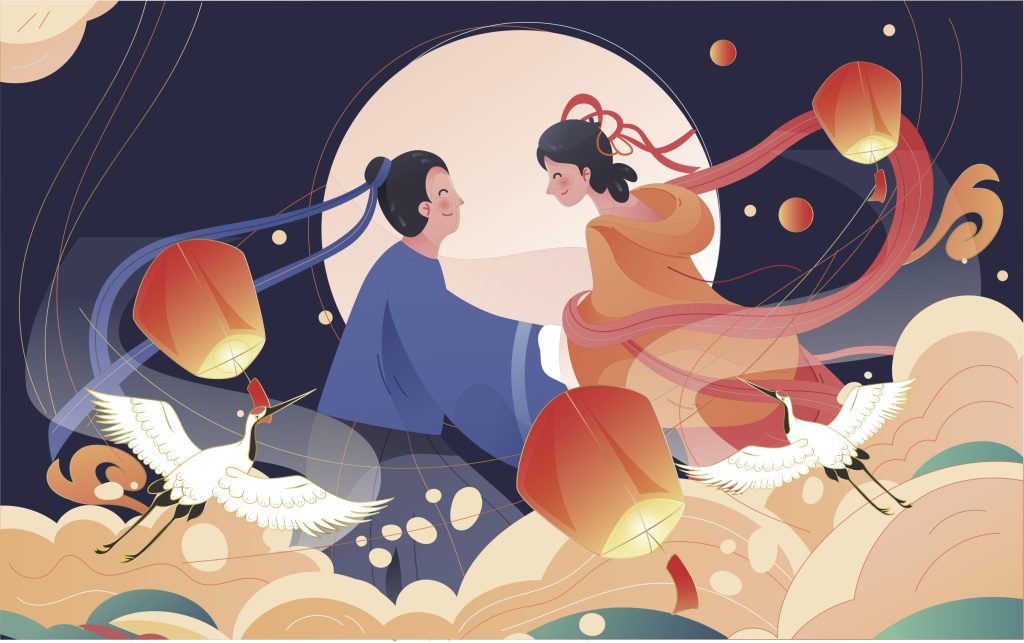02 Aug 2024
On a warm August evening, couples stroll hand in hand along the city streets. Fairy lights hanging from the trees cast a gentle glow as a young woman stands with a basket selling roses. Love fills the air.
This is the scene of Chinese Valentine’s Day, also known as Qixi Festival or Double Seventh Festival because it falls on the seventh day of the seventh lunar month.
However, the festival originally was not intended as a celebration of love. In ancient times, it was a day for girls to pray for talent and creativity to enhance their craftsmanship skills.

The Legend of the Cowherd and the Weaver Girl. Credit: https://plus.hellorf.com/
The celestial legend
Most Chinese kids have heard a folktale called “The Legend of the Cowherd and the Weaver Girl”.
The story goes like this: Long, long ago, there was a man called Niulang (meaning “cowherd”) and a woman called Zhinü (meaning “weaver girl”). Zhinü was a fairy gifted in weaving clouds and rainbows. She descended to Earth and fell in love with Niulang. They married and had two children.
But their happiness was short-lived. The Queen Mother of Heaven was angered by the union between a mortal and a fairy. She created a celestial river, also known as the Milky Way, to separate them.
Moved by the couple’s love, magpies would form a bridge across the Milky Way once a year on the seventh day of the seventh lunar month, so that the couple and their children can reunite briefly.
 Huailin Mu
Huailin Mu
According to Huailin Mu, Teaching Associate at Xi’an Jiaotong-Liverpool University’s Chinese Cultural Teaching Centre, the cowherd and weaver girl were not always romantic characters.
The terms are mentioned in ancient Chinese texts, including the Book of Songs, Mu says. The Book of Songs was one of the earliest collections of Chinese poetry, written and compiled between the 11th century and the eighth century BCE.
“In the book, the poet described ‘cowherd’ and ‘weaver girl’ as two celestial stars,” Mu says.
Throughout the ages, poets, writers and storytellers used their imaginations, imbuing the celestial figures with human characteristics.
“With each retelling, the tale became more elaborate and more intertwined with the festival. Eventually, it acquired the name ‘Chinese Valentine’s Day’, and the festival symbolises the everlasting love and devotion between couples, just like the cowherd and the weaver girl strove to overcome obstacles and be together,” Mu says.
Evolving customs
Because the festival was originally associated with celestial phenomena, in ancient times Chinese women would worship the Weaver Girl, a legendary figure who is skilled at weaving clouds and also protects women, children and lovers.
According to Mu, on the evening of the seventh day of the seventh lunar month, young girls would traditionally engage in customs to worship the Weaver Girl and seek her blessings.
“One practice was threading needles, where girls would showcase their needlework skills by threading needles with great precision. It was believed that by doing so, they could acquire dexterity and proficiency in craftsmanship.
“This tradition shows the importance of domestic skills in Chinese culture and the desire for women to excel in these areas,” Mu says.

The Legend of the Cowherd and the Weaver Girl. Credit: https://plus.hellorf.com/
Over time, the festival’s focus evolved.
“The festival was originally centred around women’s craftmanship skills and prayers for talent. Gradually, it became an occasion for couples to express their love and affection for each other,” Mu says.
With the influence of Valentine’s Day in the West, recent years have also seen changes in customs.
“Modern celebrations often include elements such as candlelit dinners, surprise gifts, and romantic getaways,” she says. “The commercial aspect has also grown, with businesses promoting special deals and events catering to couples.”
Apart from celebrations, Mu has observed that social discussions evolve with time.
“There is a growing awareness of women’s rights and gender equality in China in recent years, and people raise more questions about the legend on social media,” she says.
“For example, in the legend, why would Zhinü marry a mortal in the first place? Why was it only Zhinü who faced consequences, while Niulang seemingly escaped unscathed? Why couldn’t she bring her own children with her back to the heavens?
“The festival-themed discussions also reflect the shifting societal attitudes towards gender roles and expectations,” she adds.
By Xinmin Han
Edited by Tamara Kaup and Patricia Pieterse
Photo courtesy of Huailin Mu
02 Aug 2024
RELATED NEWS

Explainer: Embracing the glow of the Lantern Festival
As the first whispers of spring emerge, shop fronts in China become adorned with the glow of lanterns. When day turns into night, the once ordinary pathways ...
Learn more







